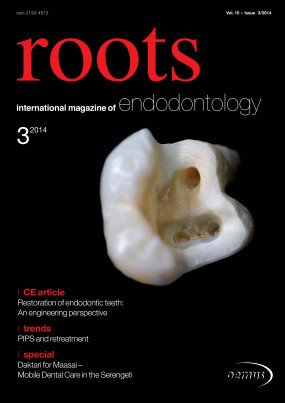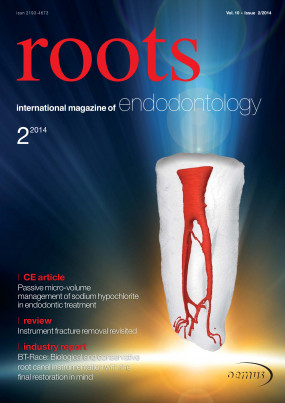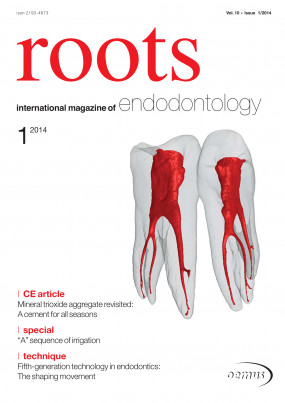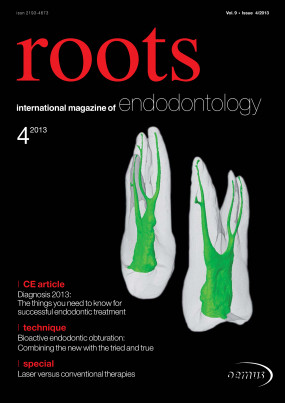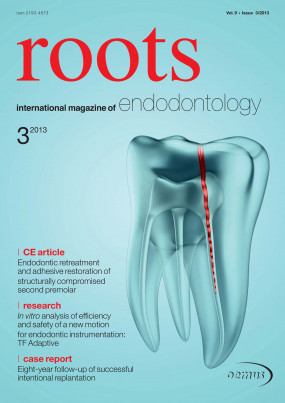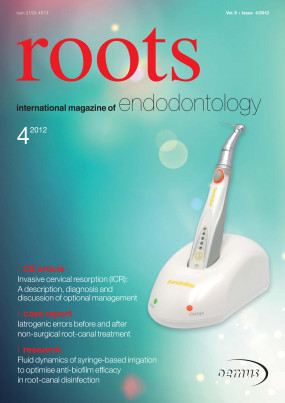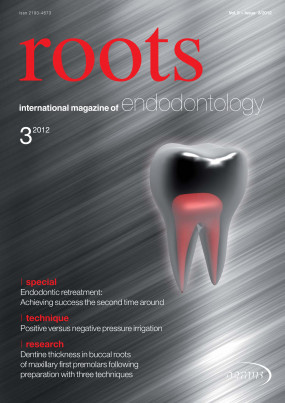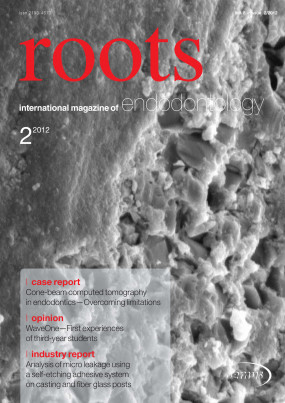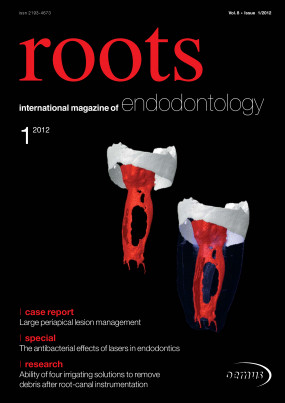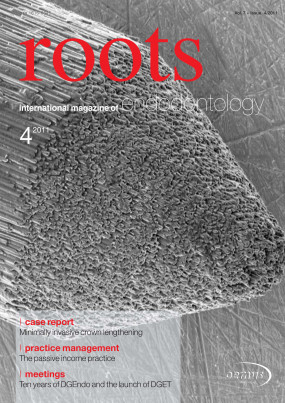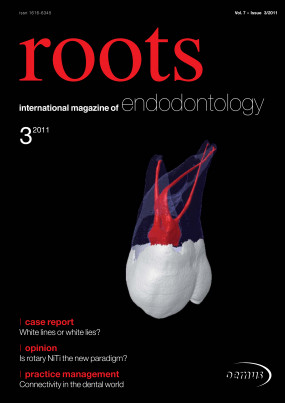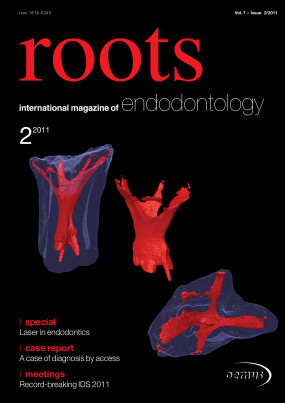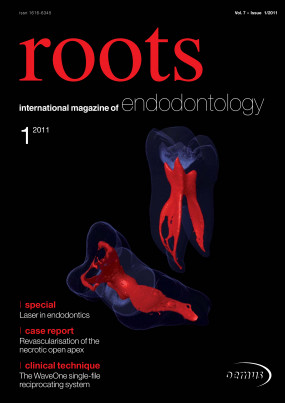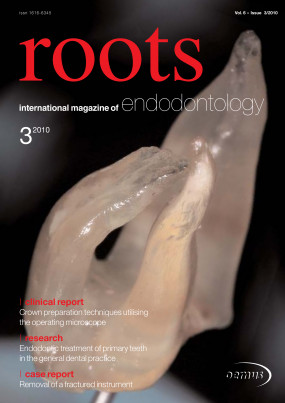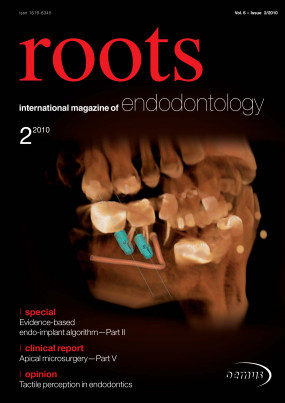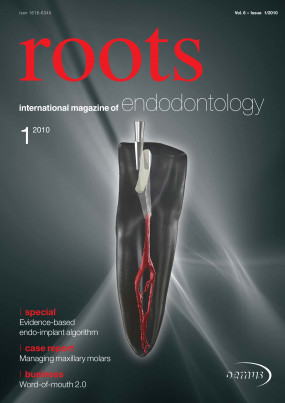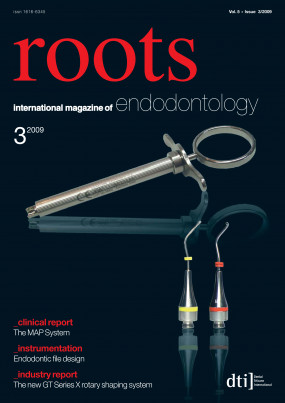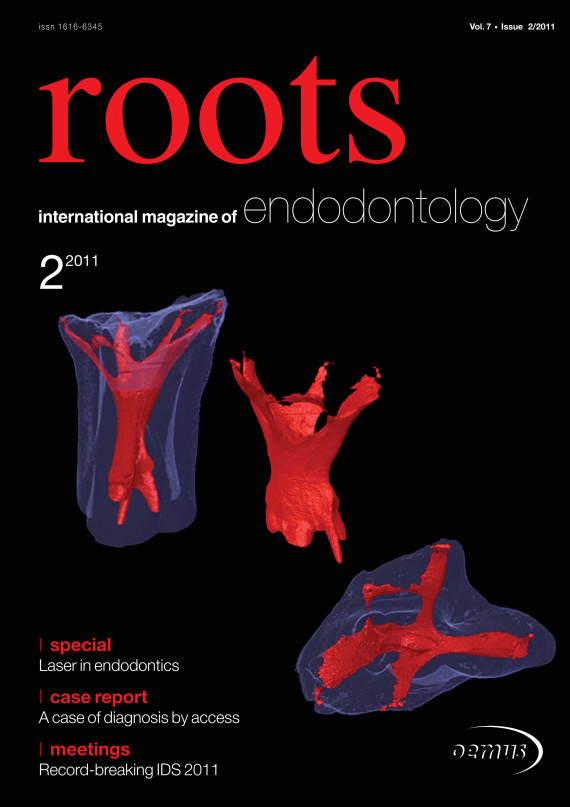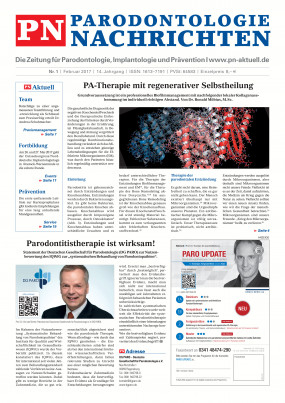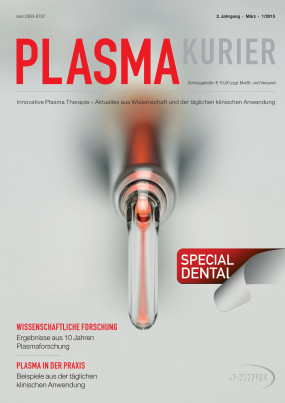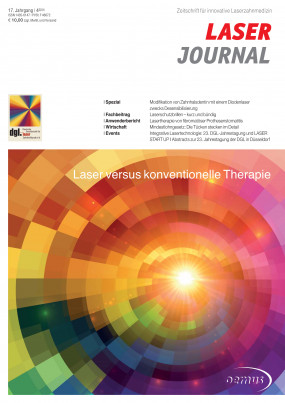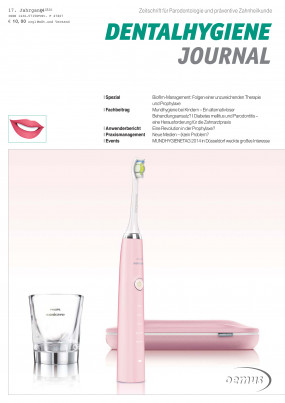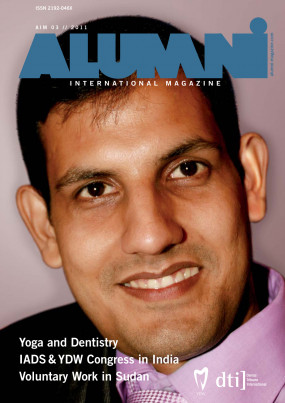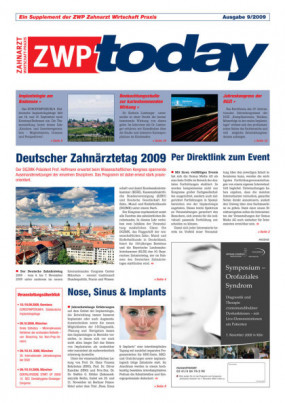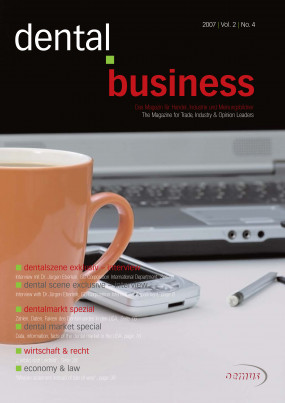Inhaltsverzeichnis
3
With the International Dental Show in Cologne behind us, it seems the perfect time to look at recent developments and trends in endodontics. Even though the main principles of root-canal treatment—mechanochemical preparation of the root-canal system to remove pulp tissue and bacteria, 3-D obturation and adequate coronal restoration—have not changed, there have been a few remarkable developments in the form of systems that offer a completely new approach to root-canal preparation. Based on the established findings of the balanced force technique, new root-canal preparation techniques that use only one file with reciprocal motion have been introduced to the market. These new techniques may have the potential to make root-canal preparation easier for us and safer for our patients. However, at this point there are only a few published papers available to demonstrate the potential of these techniques. Therefore, further clinical studies are needed to corroborate the findings of these published studies in order to demonstrate the potential clinical benefit scientifically. In this regard, I am expecting there to be interesting information and publications over the next few months...
6
Laser in endodontics (Part II)
Prof Giovanni Olivi, Prof Rolando Crippa, Prof Giuseppe Iaria, Prof Vasilios Kaitsas, Dr Enrico DiVito & Prof Stefano Benedicenti, Italy & USA
After explaining the basic physics of the laser and its effects on both bacteria and dentinal surfaces, the second part of this article series will analyse some of the most important research in the international literature today and the new guidelines for the use of laser as a source of activation of chemical irrigants...
14
otal elimination of bacteria from infected root-canal systems remains the most important objective of endodontic therapy. However, in spite of a plethora of new products and techniques, achieving this objective continues to elude our profession. Histo-rically, endodontic treatment focused on root-canal disinfection with “entombment” of remaining bacteria within dentinal tubules and inaccessible areas of the root-canal system. Although many factors have been implicated in the aetiology of endo-dontic failures, it has become evident that these “entombed” bacteria play a pivotal role in the persistence of endo-dontic disease...
20
Endodontics is all about preserving the natural dentition. There is no better implant than the natural tooth, given the fact that it can be treated and restored effectively and predictably. Many factors, such as root perforation, affect the prognosis of endo-dontic treatment.1 Today, perforations can be managed predictably with the use of MTA cement as sealing material.
22
28
The new WaveOne NiTi file system from DENTSPLY Maillefer is a single-use, single-file system to shape the root canal completely from start to finish. Drs Julian Webber, Pierre Machtou, Wilhelm Pertot, Sergio Kuttler, Clifford Ruddle and John West were involved in the development, field testing and research associated with WaveOne. roots had the opportunity to speak to Dr Webber, The Harley Street Centre for Endodontics (London, UK), about the benefits of the system and the responses it received from visitors during IDS 2011...
30
Key principles that enhance success when restoring endodontically treated teeth
Dr Nadim Z. Baba & Dr Charles J. Goodacre, USA
Restoring endodontically treated teeth and retaining them throughout life remains a challenge. Several factors play a key role in the long-term survival of endodontically treated teeth and associated restorations. The purpose of this article is to identify the key principles that affect tooth and restoration survival.
36
The intent of this article is to see whether I can finally shake up those of you who read my blog (on www.oralhealthjournal.com), spend time on it and yet do not post. The point of this “mashup” is to engender “discovery” of information, trends, likes, dislikes etc. and to DIALOGUE in the truest manner and context of social networking within this profession. Read away McDentist and offer your commentary, good, bad or indifferent, but never overlook the opportunity to make your voice heard...
40
For the precise location of the apical constriction, electronic means have been proven to be superior to using radiographs. RAYPEX devices ensure precise measurement and feature a unique zoom-in function, which significantly aids endodontic treatment. The latest model, RAYPEX 6, redefines user-friendliness and design standards...
42
The American Association of Endodontists (AAE) held its annual session from 13 to 16 April 2011 at the Henry B. Gonzalez Convention Center in San Antonio. The theme of the meeting, which offered attendees the chance to earn up to 31 continuing education credits, was Bridging the Gap: Partners in Interdisciplinary Care. The focus of the meeting was on collaboration among dental professionals for optimal patient care.
44
With 115,000 visitors and nearly 2,000 exhibitors, this year’s International Dental Show (IDS) was the biggest dental trade show ever. The show boasted a 9 % increase compared with 2009. People from 148 countries travelled to Cologne to see new products, learn about innovative treatment methods and network with other dental professionals. Exhibitors from 85 countries seized the opportunity to establish and further contacts, win new customers and open up new markets...
49
50
Imprint
Copyright Regulations _roots international magazine of endodontology is published by Oemus Media AG and will appear in 2011 with one issue every quarter. The magazine and all articles and illustrations therein are protected by copyright. Any utilisation w
Kein Kurztext vorhanden. Schauen Sie in die PDF.
